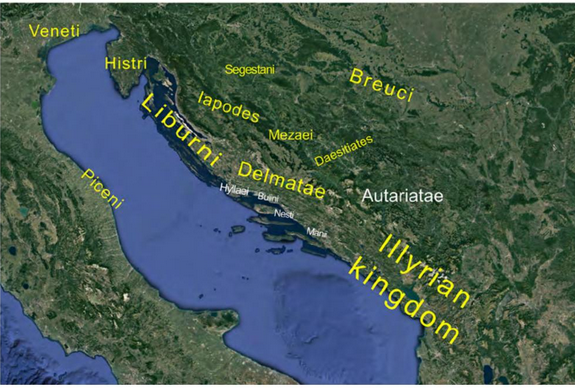Here’s a preprint that does a pretty good job of covering some of these questions about who were the Illyrians and the contact zone to their north. All of this was in the context of trying to pin down the origins of the Albanian language. J2b L283 is a bit of a mysterious lineage just like the Albanian language, so I don’t think it’s too surprising that the two go hand in hand.
From the paper,
Ancient DNA reveals the origins of the Albanians:
“Haplogroup J2b-Z600 branched off its parent lineage J2b-L283 around 3500-3000 BCE (
77, 78). Current sampling suggests that J2b-Z600 was absent from the European Neolithic-Chalcolithic (
Fig. 8), as it appears abruptly on the aDNA record in the Serbian Bronze Age (2100-1800BCE) in a Maros cultural context, alongside the parent subclade of R1b-BY611 (Fig. S9) (
5, 79). This places two of the most frequent paternal lineages of the Albanians (Fig. S9) in the Central-West Balkans by the EBA (
Figs. 8-
9, S9). Haplogroup J2b-Z600 experienced a major founder effect and diversification in the ancient populations of the Adriatic coast (Albania, Croatia, Montenegro),
where it accounts for 50-70% of all paternal lineages during the BA-IA (Figs.
8-
9), and has been found in samples associated with major West Balkan archaeological cultural expressions, most notably in Maros, Cetina, Japodian and Liburnian contexts (Tables S23-S24, S28) (
5, 79). Coupled with its remarkably local distribution in pre-Roman times (Fig. S10), J2b-Z600 may represent a reliable indicator of ultimate Bronze Age-Iron Age West Balkan paternal ancestry. The distributional expansion of J2b-Z600 in northern and western Europe in Roman and post-Roman times (
Figs. 8-
9, S10) is not surprising, as the West Balkans supplied the Empire with mercenaries, soldiers, and Emperors for centuries (
7–9). Within an Albanian context, J2b-Z600 subclades found in BA-IA, Roman and Medieval Albania (Bardhoc, Çinamak), Montenegro (Doclea, Velika Gruda), and Southern Croatia (Gardun, Gudnja cave), have daughter or sister lineages in modern Albanians (Table S34), suggesting significant paternal continuity from ancient south-west Balkan populations identified as “Illyrians” by classical authors (Fig. S11). aDNA samples from Roman Serbia (Sviloš, Viminacium) and Late Avar-Medieval Hungary (Alattyán, Sárrétudvari) belong to J2b-Z600 lineages related to those of modern Albanians (Table S34), indicating an ultimately south-west Balkan paternal origin for these individuals, which corroborates inscriptional and historical evidence for transplantations of “Illyrian” soldiers along the Limes (
8, 9).”
The origins of the Albanian people have vexed linguists and historians for centuries, as Albanians first appear in the historical record in the 11th century CE, while their language is one of the most enigmatic branches of the Indo-European family. To identify the populations that contributed to...

www.biorxiv.org
So there was a robust diversification of many J2b L283 lineages starting around 3200 ybp to 2900 ybp. This perfectly overlaps with the expansion of various Illyrian tribes throughout the western Balkans and eastern Adriatic coast.
Were it my study, I would not have mentioned the J2b L283 Z600 branch, but would have honed in on Z615 and below. Z615 and Z597 have similar formation dates around 5300-5000 ybp. The Mokrin sample from Serbia (perhaps western Yamnaya derived) and the 4 Mycenaean shaft grave samples from Petroto, Greece all belong to J2b L283 Z615.

www.yfull.com
I‘d like to see more sampling from BA and IA Bosnia and Serbia. Hopefully we see another paper soon that covers all or some of these areas.




